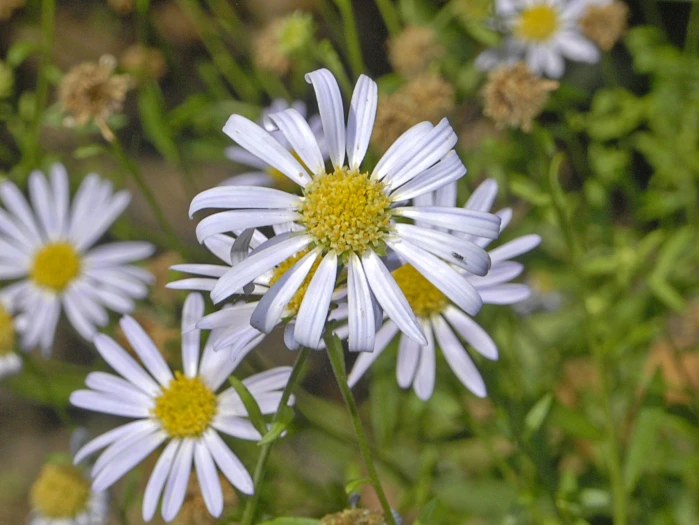Japanese Aster
(Kalimeris incisa)
Japanese Aster (Kalimeris incisa)
/
/

Hectonichus
CC BY-SA 3.0
Image By:
Hectonichus
Recorded By:
Copyright:
CC BY-SA 3.0
Copyright Notice:
Photo by: Hectonichus | License Type: CC BY-SA 3.0 | License URL: https://creativecommons.org/licenses/by-sa/3.0 | Uploader: Hectonichus | Publisher: Wikimedia Commons | Title: Asteraceae_-_Kalimeris_incisa.jpg | Notes: {{Information |Description={{en|1=''[[Keckiella antirrhinoides]]'' Santa Ana Botanic Garden in Claremont, California, USA. Identified by sign.}} |Source=Own work by uploader |Author=[[User:Stickpen|Stickpen]] |Date=April 23, 2009 |Permission=rel |






















Estimated Native Range
Climate Requirements for Gillette, Wyoming
| This Plant | Your Site | Plant Suitability for Your Location | ||
|---|---|---|---|---|
| • Precipitation | 17" - 121" | 16" | Your precipitation may be insufficient for this plant. Irrigate N" / year. | Irrigate N" / year |
| • High Temp. | 64°F - 90°F | 85°F | Your summer temperatures are normal for this plant. | Excellent |
| • Low Temp. | -27°F - 54°F | 10°F | Your winter temperatures are normal for this plant | Excellent |
This plant should grow well at your location with about N inches per year (Y minutes per month) of irrigation.
Summary
Kalimeris incisa, commonly known as Japanese Aster, is a deciduous perennial herb native to grasslands, meadows, and the edges of forests in East Asia, including China, Korea, and Japan. It typically grows to a height and width of 1-2 feet (0.3-0.6 meters), forming a mounded clump. The plant features daisy-like flowers with pale blue to violet petals surrounding a yellow center, blooming from mid-summer to fall. The flowers are moderately showy and attract pollinators such as bees and butterflies.
Japanese Aster is valued for its long flowering period and its ability to thrive in a range of garden settings. It is often used in borders, cottage gardens, and as a filler in mixed beds due to its compact size and floriferous nature. It is also relatively low maintenance, requiring minimal care once established. In cultivation, it prefers full sun to part shade and adapts to various soil types, provided they have good drainage. Regular watering is needed, especially in dry conditions. While generally disease-resistant, it can be prone to powdery mildew in humid climates. Deadheading spent flowers can encourage a longer blooming period and prevent self-seeding.CC BY-SA 4.0
Japanese Aster is valued for its long flowering period and its ability to thrive in a range of garden settings. It is often used in borders, cottage gardens, and as a filler in mixed beds due to its compact size and floriferous nature. It is also relatively low maintenance, requiring minimal care once established. In cultivation, it prefers full sun to part shade and adapts to various soil types, provided they have good drainage. Regular watering is needed, especially in dry conditions. While generally disease-resistant, it can be prone to powdery mildew in humid climates. Deadheading spent flowers can encourage a longer blooming period and prevent self-seeding.CC BY-SA 4.0
Plant Description
- Plant Type: Herb
- Height: 1-1.5 feet
- Width: 1-1.5 feet
- Growth Rate: Moderate
- Flower Color: Blue, White
- Flowering Season: Summer, Fall
- Leaf Retention: Deciduous
Growth Requirements
- Sun: Full Sun, Part Shade
- Water: Medium
- Drainage: Fast, Medium, Slow
Common Uses
Bank Stabilization, Bee Garden, Border Plant, Butterfly Garden, Deer Resistant, Drought Tolerant, Edible*Disclaimer: Easyscape's listed plant edibility is for informational use. Always verify the safety and proper identification of any plant before consumption., Groundcover, Low Maintenance, Potted Plant, Rabbit Resistant, Rock Garden, Salt Tolerant, Showy Flowers, Street Planting
Natural Habitat
native to grasslands, meadows, and the edges of forests in East Asia, including China, Korea, and Japan
Other Names
Common Names: Kalimeris
Scientific Names: Kalimeris incisa , Aster incisus var. incisus , Aster macrodpm , Kalimeris incisa var. incisa
GBIF Accepted Name: Kalimeris incisa (Fisch.) DC.